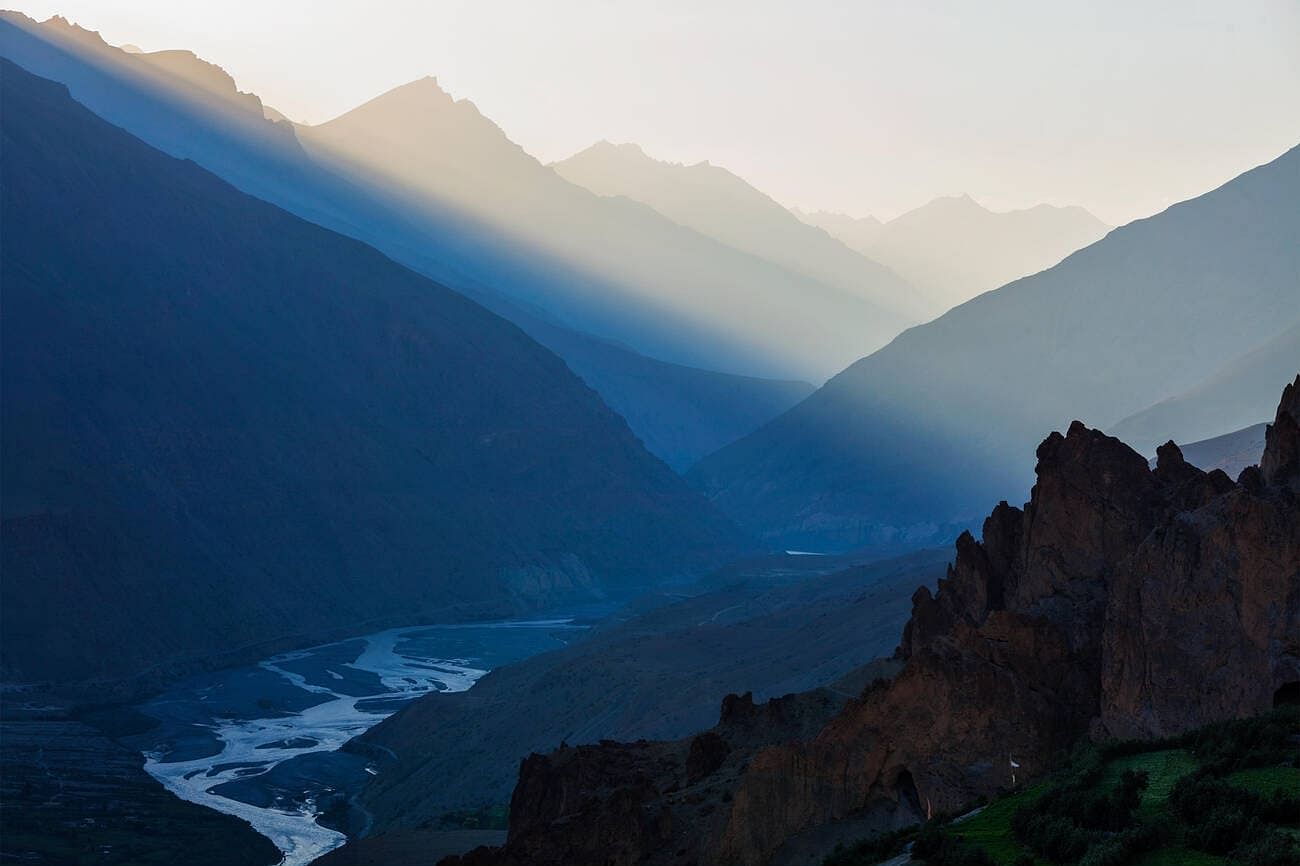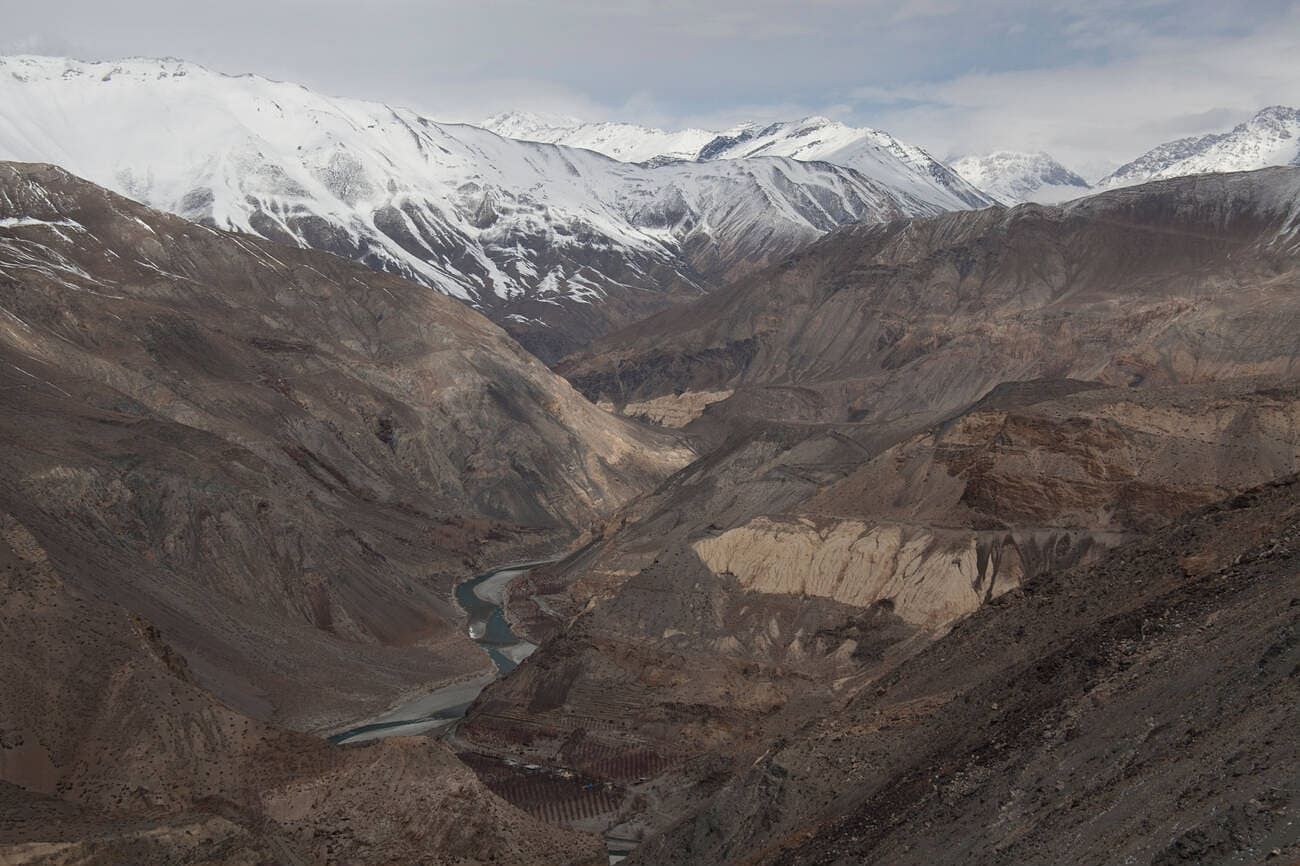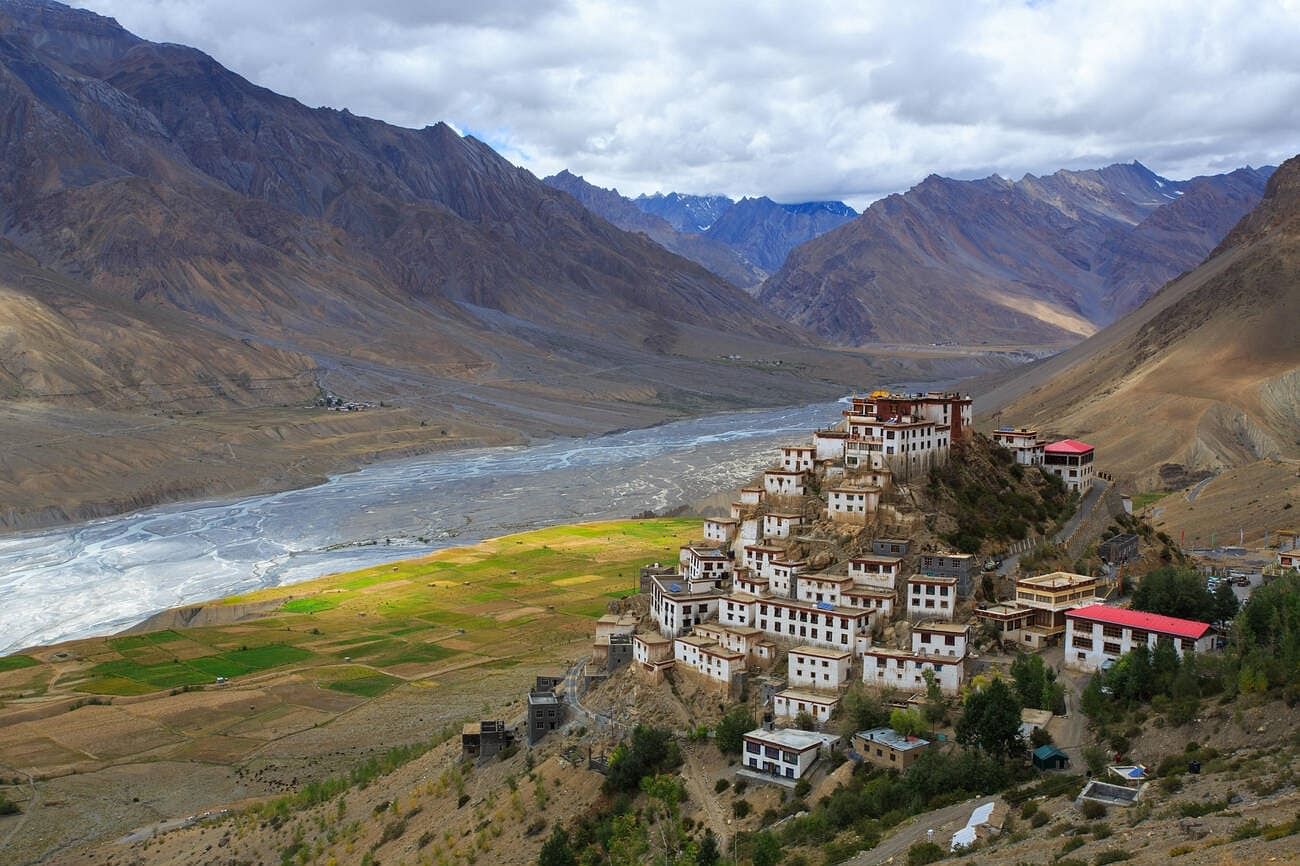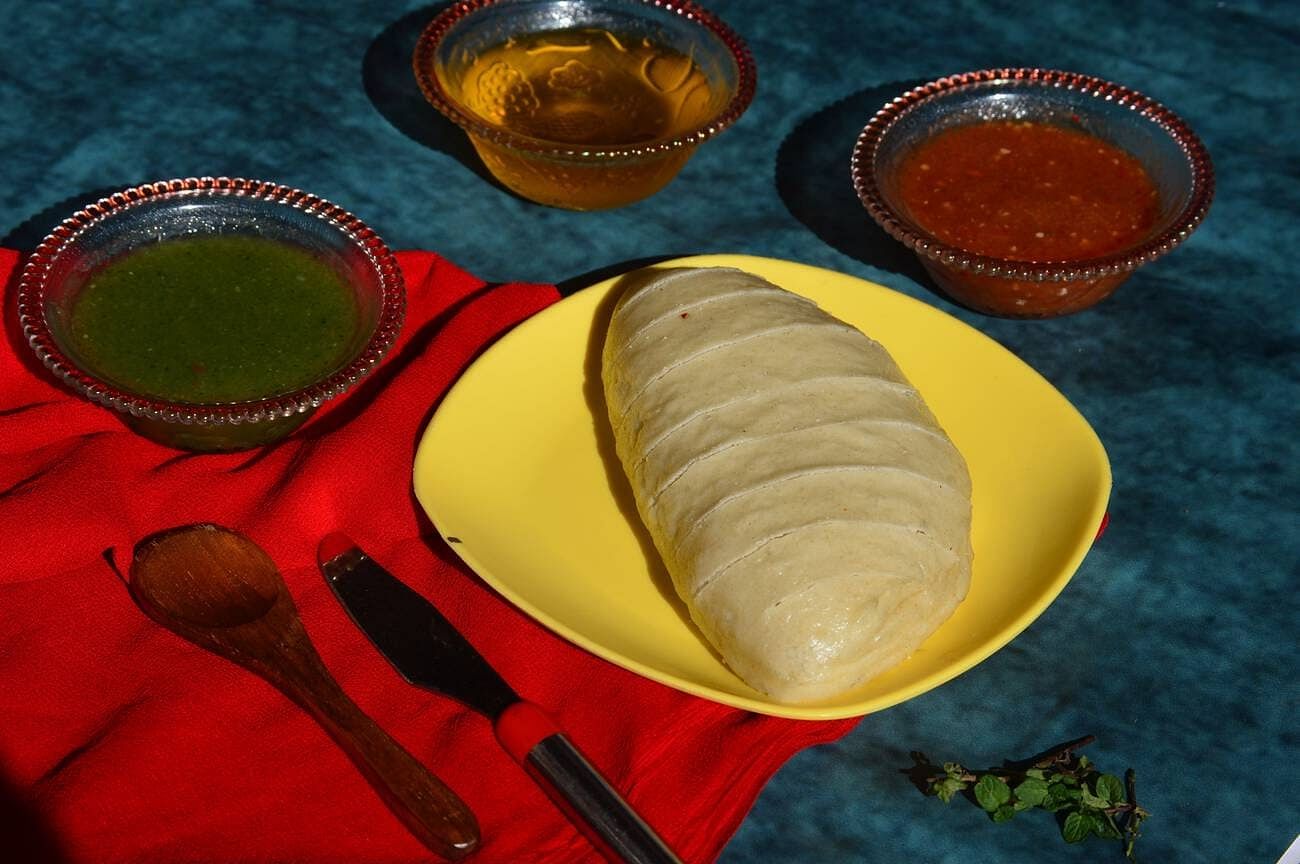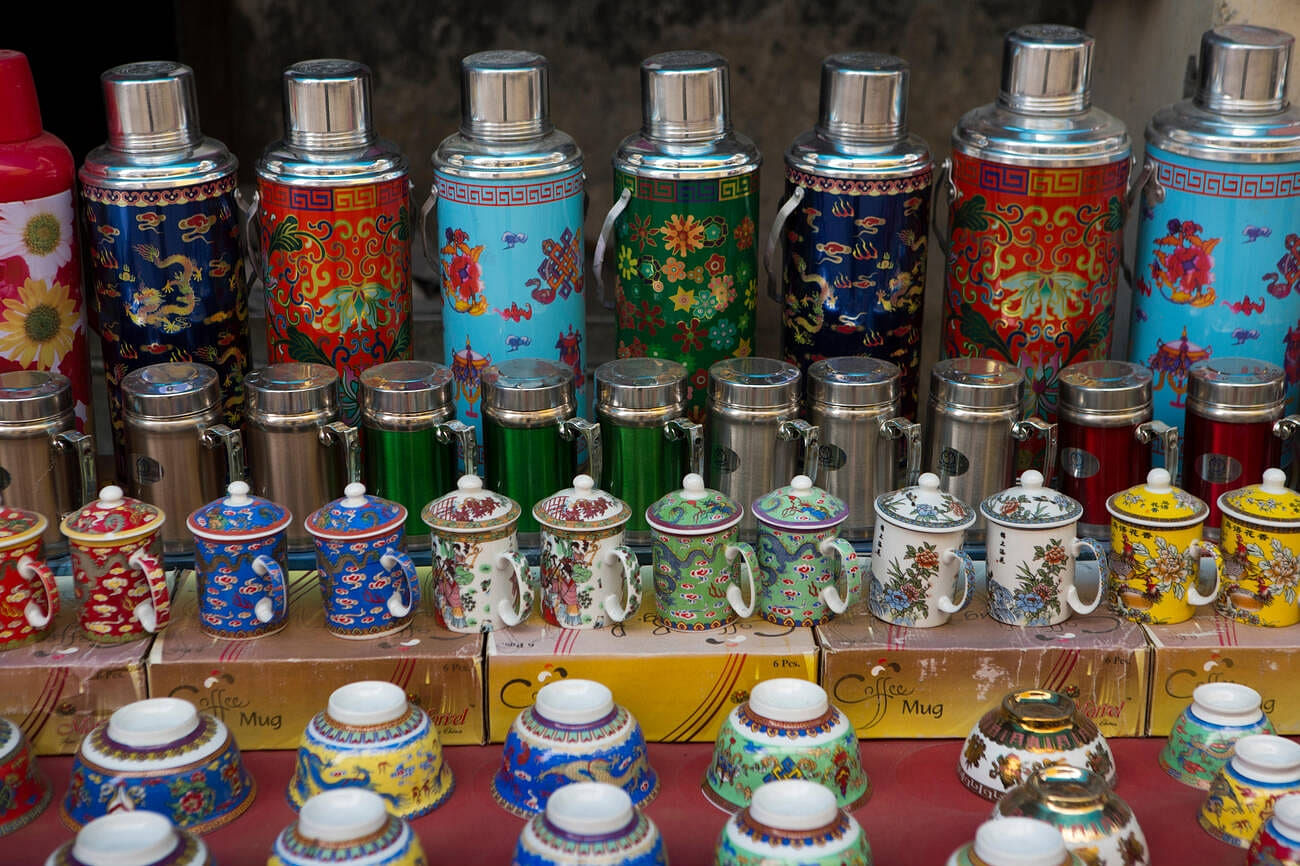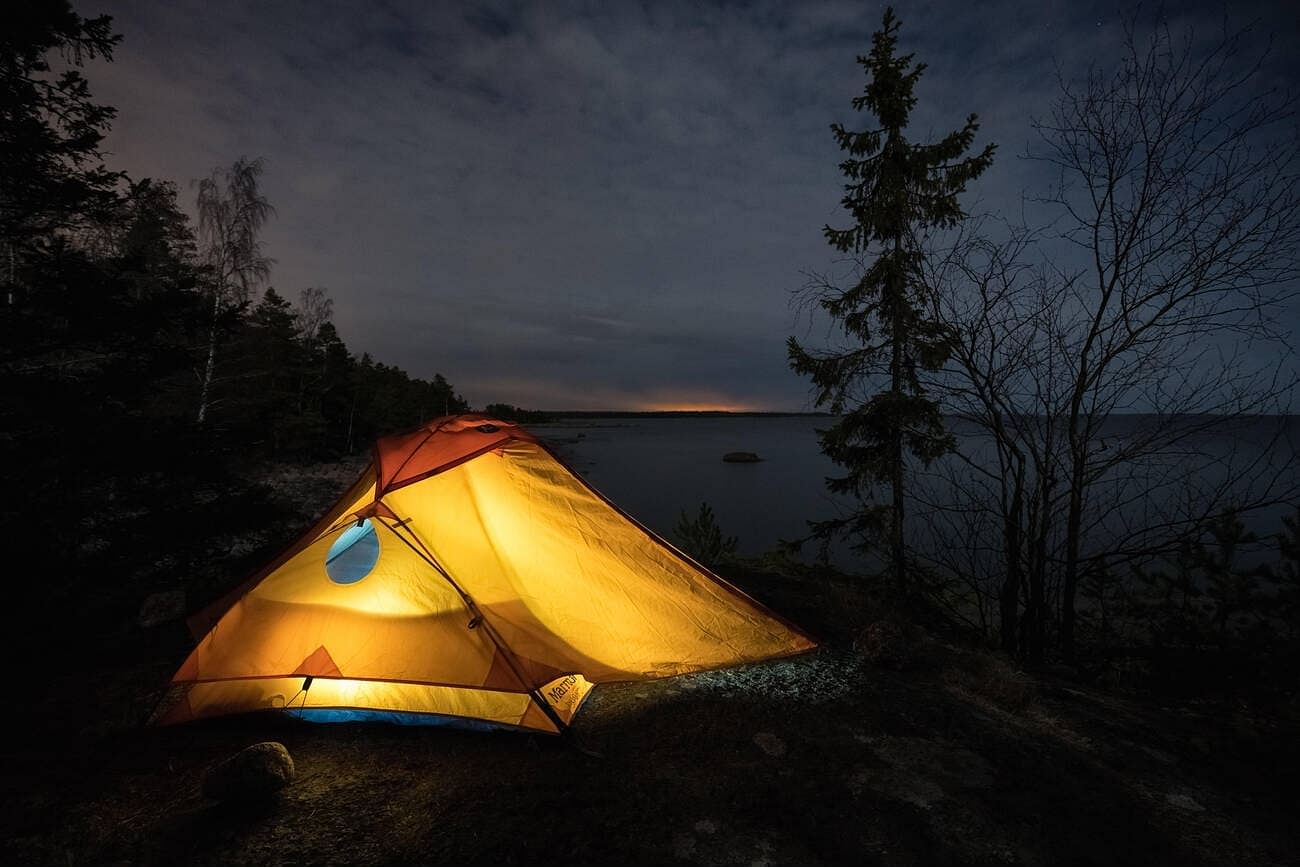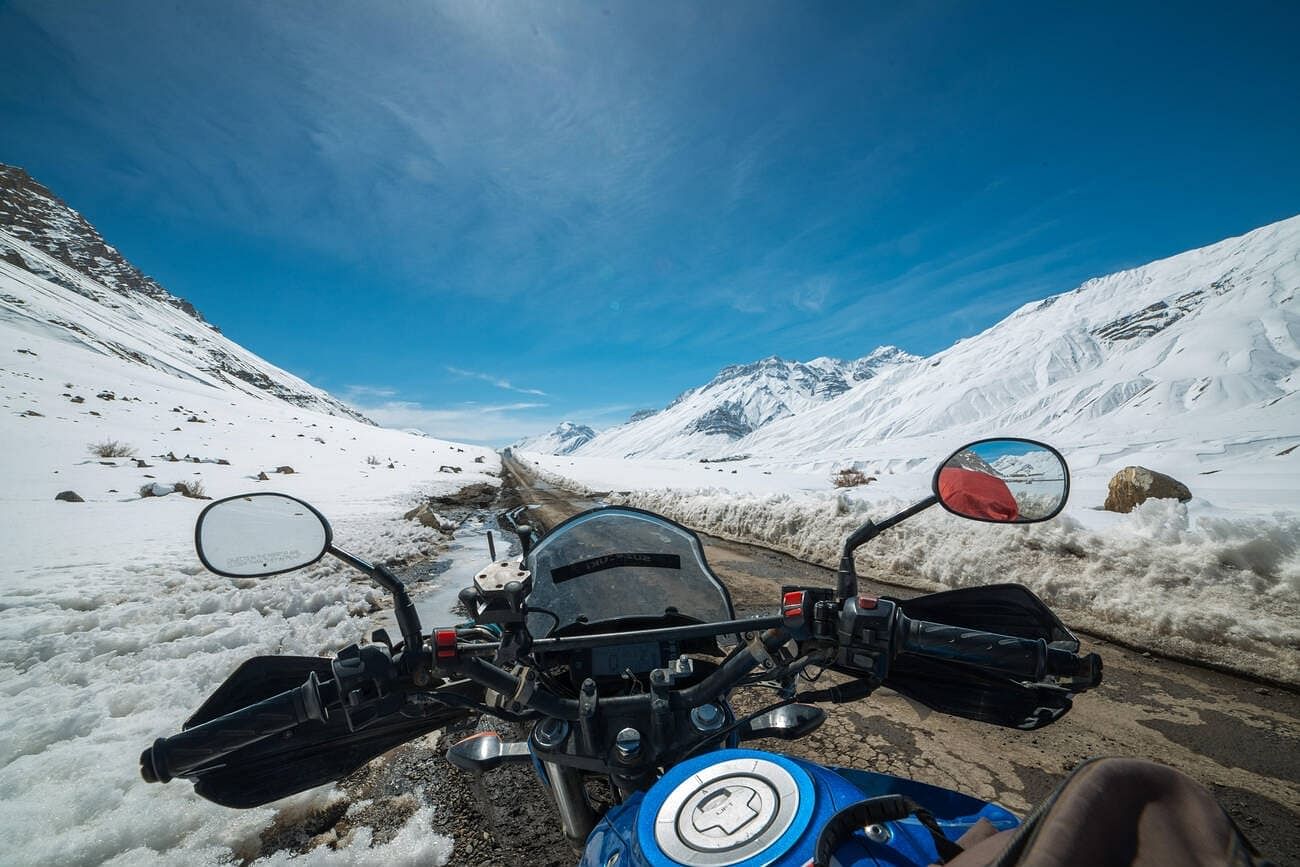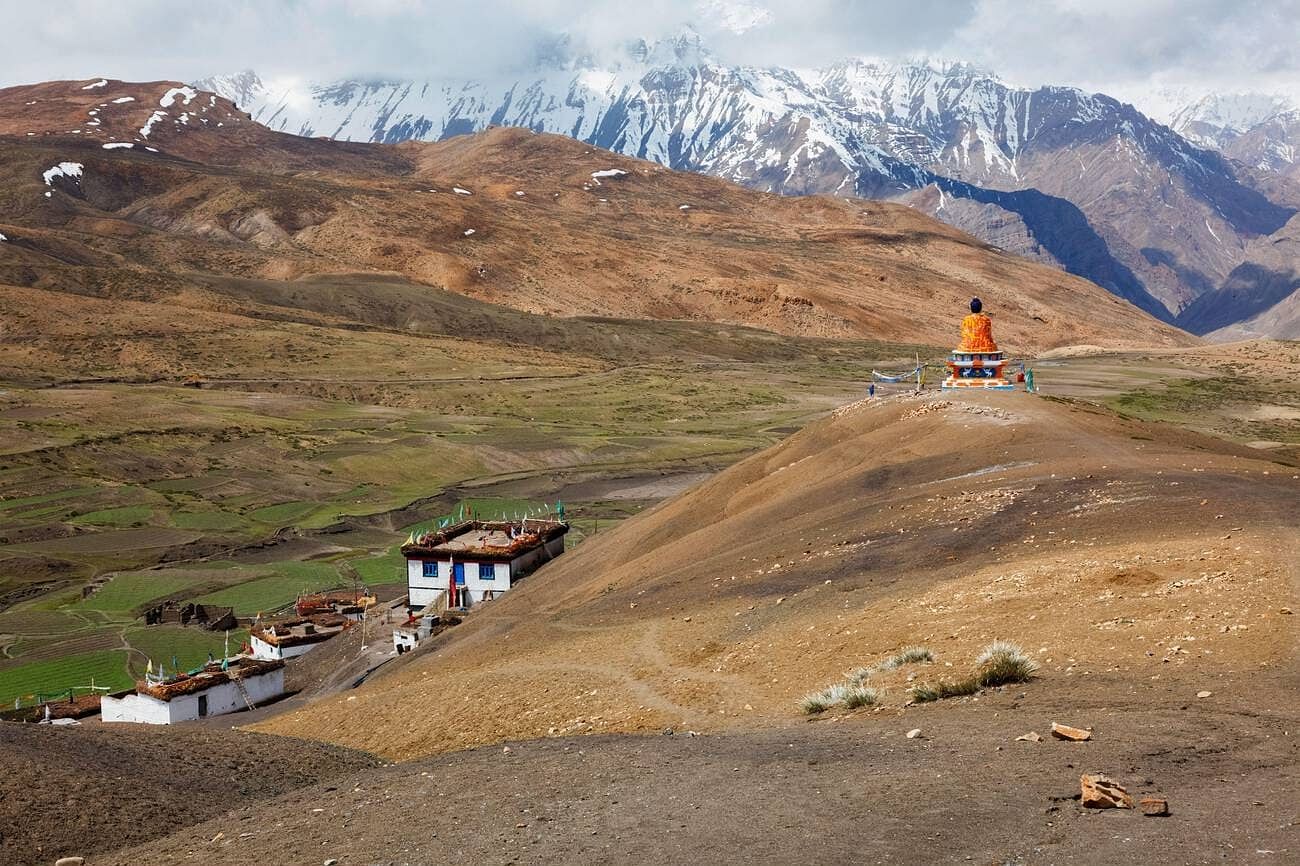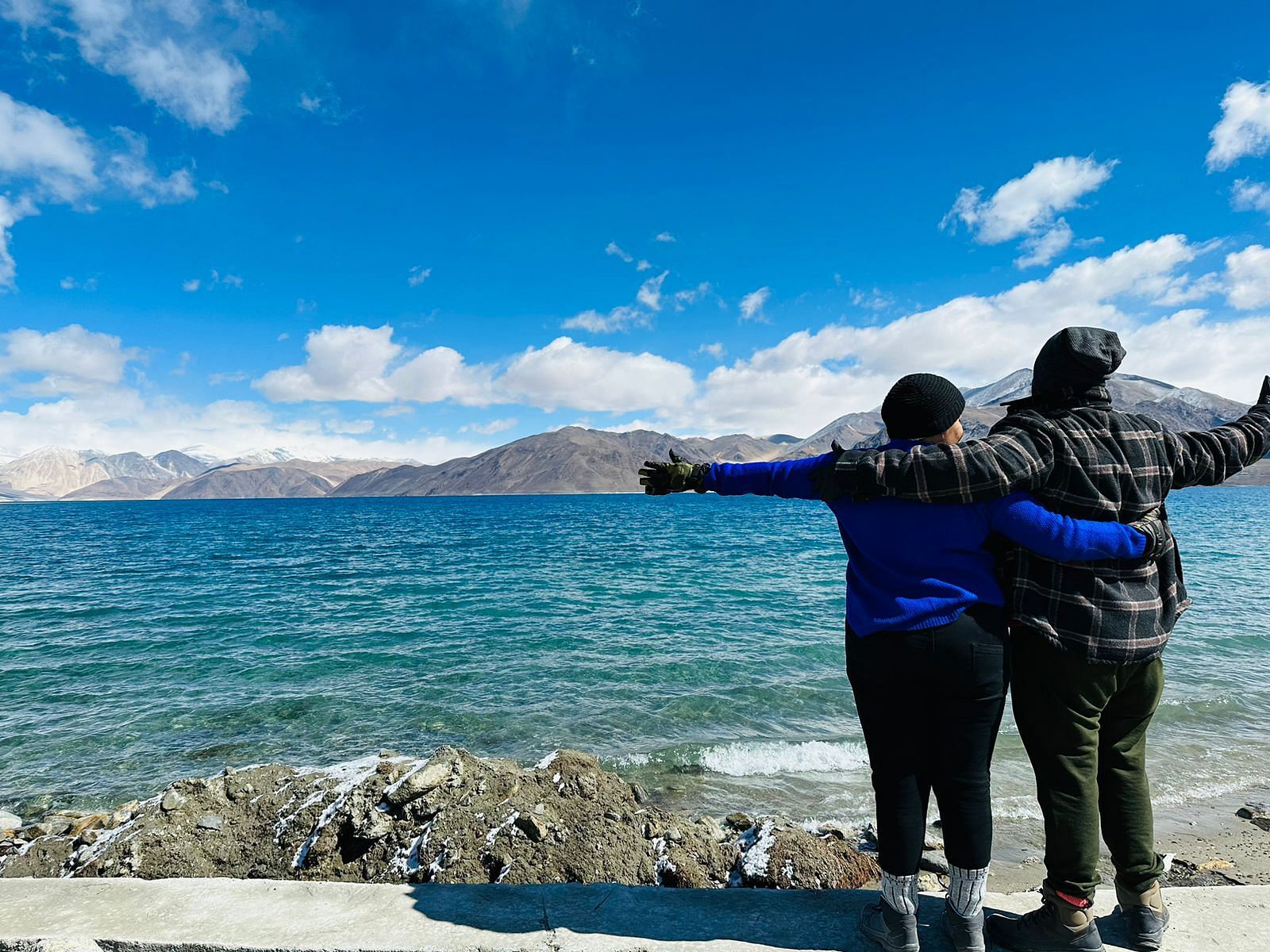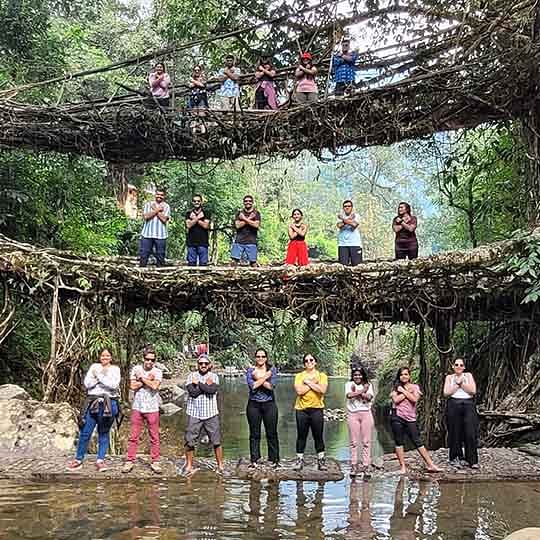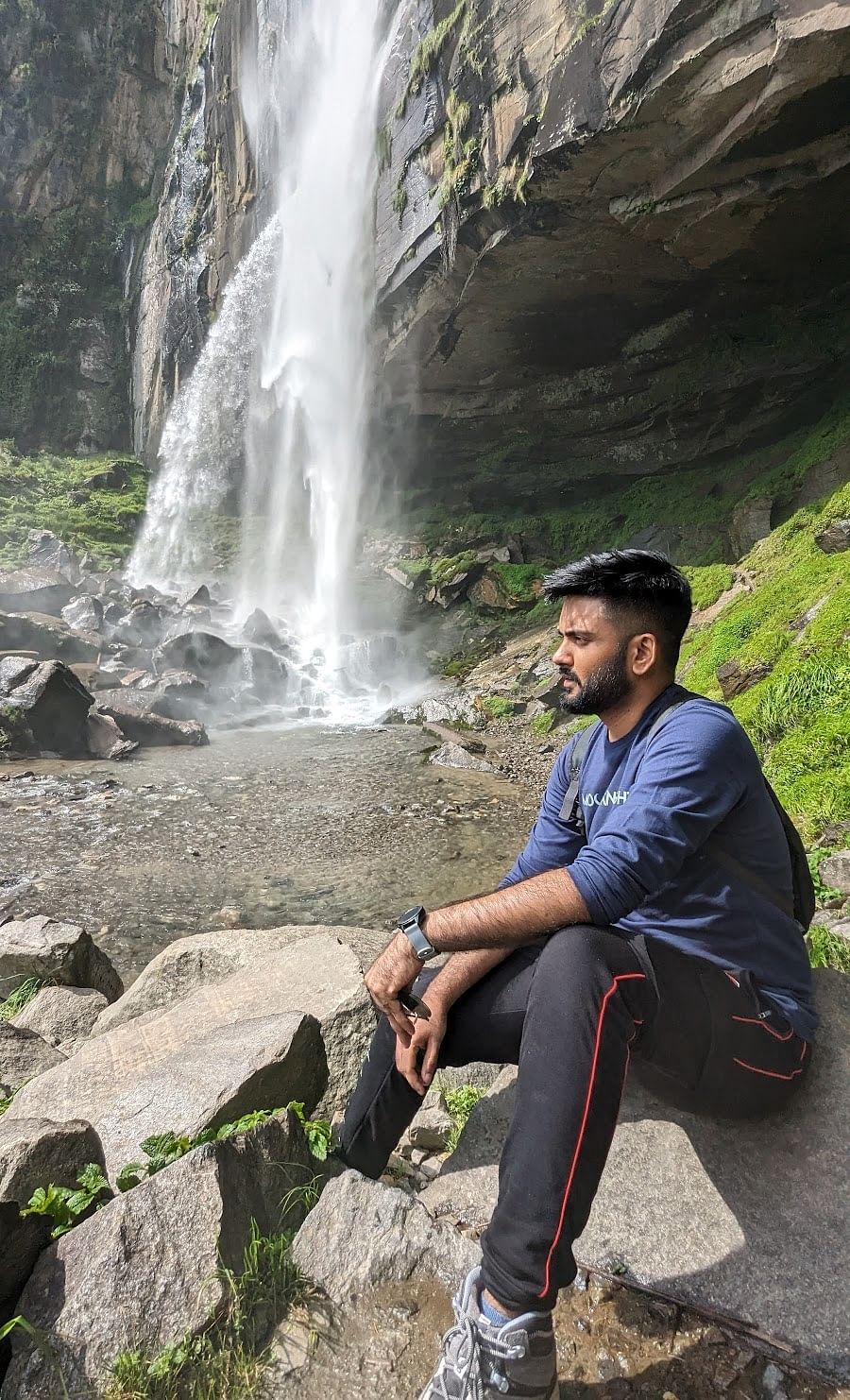Planning a trip to Spiti Valley? This remote and stunning destination in the Indian Himalayas is a dream for many travelers. However, its unique location and environment mean that visitors often have many questions before they go. To help you prepare, we’ve compiled a list of Spiti Valley Trip FAQs about traveling to Spiti Valley.From the best places to visit in Spiti and how to reach Spiti, to what to pack and the best time to visit Spiti, we’ve got you covered with a travel guide to Spiti Valley road trips. We’ll also discuss important safety tips and provide information about local culture and customs. Whether you’re a seasoned traveler or commencing your first adventure, these Spiti Valley Travel Tips will help ensure your trip to Spiti Valley is smooth and enjoyable.
The journey to Spiti Valley can be challenging, but the beautiful landscapes, ancient monasteries, and warm hospitality of the locals make it all worthwhile. So, read on to get answers to all your questions and start planning your unforgettable trip to this beautiful part of the world. Whether you’re looking for adventure, peace, or a bit of both, it has plenty of things to do in Spiti Valley for every traveler with our Spiti Tour Packages!
1. Where is Spiti Valley located?
Spiti Valley is located in the northern part of Himachal Pradesh, India. It lies in the rain shadow of the Himalayas, bordering Tibet to the east. The valley is part of the Lahaul and Spiti district known for its remote and rugged terrain. This is the most asked Spiti Valley Trip FAQs.
2. What is the geography of Spiti Valley like?
Spiti Valley is a high-altitude cold desert with an average elevation of around 3,500 meters (11,500 feet) to 4,500 meters (14,800 feet) above sea level. It is surrounded by high mountain ranges characterized by barren hills, deep gorges, and the Spiti River flowing through its midst.
3. What is the climate of Spiti Valley?
Spiti Valley experiences a cold desert climate. Winters are extremely harsh, temperatures dropping below freezing, and heavy snowfall often closes roads. Summers are short and relatively mild, making it the ideal time for travel from mid-May to mid-October. This is the most asked Spiti Valley Trip FAQs.
4. When is the best time to visit Spiti Valley?
The best time to visit Spiti Valley is from June to September when the weather is pleasant, and most roads are open. This period allows for easier access to remote villages and attractions like Chandratal Lake and Key Monastery. This is the most asked Spiti Valley Trip FAQs.
5. How do I reach Spiti Valley?
There are two main approaches to Spiti Valley:
- From Shimla: Travel via NH5 and NH505 through Kinnaur. This route passes through Reckong Peo and offers scenic views of lush green valleys before reaching the stark landscapes of Spiti.
- From Manali: Take the Manali-Leh Highway (NH3) via Rohtang Pass and Kunzum Pass. This route is more challenging due to high-altitude passes and remains open only during the summer months. Travelers should be prepared for long hours of driving on narrow and sometimes unpaved mountain roads.
6. Do I need permits to visit Spiti Valley?
Yes, permits are required for non-Indians visiting Spiti Valley due to its proximity to the Indo-Tibetan border. Foreign nationals must obtain an Inner Line Permit (ILP) from the District Commissioner’s Office in Reckong Peo or Shimla, depending on the route chosen. This is the most asked Spiti Valley Trip FAQs.
Suggested Read: Stargazing in Spiti Valley
7. What types of accommodations are available in Spiti Valley?
Accommodation options in Spiti Valley range from basic guesthouses and homestays in villages to more comfortable hotels and eco-resorts in Kaza, the largest town in the region. Camping is also popular, with designated campsites offering stunning views of the surrounding mountains and starry skies.
8. What are the must-visit places in Spiti Valley?
Key Monastery (Kye Gompa), Tabo Monastery, Chandratal Lake, Pin Valley National Park, and Dhankar Monastery are must-visit places in Spite Valley.
9. What are the road conditions like in Spiti Valley?
The roads in Spiti Valley are challenging, often narrow and unpaved with sharp turns and steep ascents. Road conditions can deteriorate due to landslides, especially during the monsoon season. It’s advisable to travel in sturdy vehicles preferably during daylight hours.
10. Is Spiti Valley safe for tourists?
Spiti Valley is generally safe for tourists, with friendly locals and a low crime rate. However, travelers should be cautious about the high altitude and sudden weather changes, which can pose health risks. Proper acclimatization and adequate preparation are essential for a safe and enjoyable trip. This is the most asked Spiti Valley Trip FAQs.
11. What are the cultural norms in Spiti Valley?
Spiti Valley has a predominantly Buddhist culture influenced by Tibetan traditions. Visitors are expected to respect local customs, such as removing shoes before entering monasteries and stupas and seeking permission before photographing monks.
12. How can I minimize my environmental impact in Spiti Valley?
Responsible tourism is crucial in Spiti Valley to preserve its fragile ecosystem and cultural heritage. Travelers should dispose of waste properly, conserve water, and avoid disturbing wildlife habitats. Choosing eco-friendly accommodations and supporting local sustainable initiatives can help minimize environmental impact.
13. Are there ATMs in Spiti Valley?
ATMs are limited in Spiti Valley, with the main town of Kaza having a few options. Carrying enough cash for your entire trip is advisable, as credit card acceptance may be limited in remote areas. This is the most asked Spiti Valley Trip FAQs.
14. What should I pack for a trip to Spiti Valley?
Essential items to pack include warm clothing even in summer, sunscreen, sunglasses, a first aid kit, and medications for altitude sickness. Due to limited medical facilities in remote areas, it’s essential to carry any necessary prescription medications and basic medical supplies. This is the most asked Spiti Valley Trip FAQs.
15. Can I travel solo in Spiti Valley?
Solo travel in Spiti Valley is possible but requires careful planning, especially regarding accommodation and transportation. It’s advisable to inform someone about your itinerary and travel plans, as communication networks can be unreliable in remote areas. This is the most asked Spiti Valley Trip FAQs.
Suggested Read: Travel tips for Spiti
16. What are the medical facilities like in Spiti Valley?
Medical facilities in Spiti Valley are limited, especially in remote areas and smaller villages. Kaza has a small hospital and basic medical services, but for serious medical emergencies or specialized care, patients may need to be evacuated to larger hospitals in Shimla or Manali. Travelers are advised to carry a basic first aid kit and any necessary prescription medications.
17. How is the mobile network and internet connectivity in Spiti Valley?
Mobile network coverage in Spiti Valley is patchy and limited primarily to major towns like Kaza. In remote villages and higher altitudes, there may be no network coverage at all. Similarly, internet connectivity is unreliable and slow. It’s advisable to inform friends and family about limited communication options and plan accordingly.
18. What are the options for dining in Spiti Valley?
Dining options in Spiti Valley are predominantly limited to local Himachali and Tibetan cuisine. Popular dishes include momos (dumplings), thukpa (noodle soup), and local bread like tingmo and khambir. Most accommodations offer basic meals, and there are a few small restaurants and cafes in Kaza and larger villages.
19. Can I rent a vehicle in Spiti Valley?
Yes, travelers can rent vehicles in Kaza to explore the valley. However, it’s essential to rent from a reliable provider and ensure that the vehicle is suitable for the rugged terrain and high-altitude driving conditions. It’s also advisable to have prior experience with driving in mountainous regions.
20. What are the trekking opportunities in Spiti Valley?
Spiti Valley offers excellent trekking opportunities for all levels of trekkers. Popular treks include the Pin Parvati Pass Trek, Chandratal Trek, and the Spiti Valley Trek itself. These treks take you through stunning landscapes, high-altitude lakes, and remote villages, offering a chance to experience the raw beauty of the Himalayas.
21. Are there any cultural festivals or events in Spiti Valley?
Spiti Valley hosts several cultural festivals throughout the year, primarily linked to Buddhist traditions. The most famous festival is the Ladarcha Fair held in Kaza, celebrating the unique cultural heritage of the region. Visitors can witness traditional dances, music performances, and vibrant local markets during these festivals.
22. Is photography allowed in Spiti Valley? Are there any restrictions?
Photography is generally allowed in Spiti Valley, but there are certain areas where photography may be restricted, especially around military installations and sensitive border areas. When visiting monasteries and religious sites, it’s customary to ask for permission before taking photographs, especially inside prayer halls and around monks.
23. What precautions should I take regarding altitude sickness in Spiti Valley?
Altitude sickness, or acute mountain sickness (AMS), is a common concern in Spiti Valley due to its high altitude. Travelers should acclimatize gradually, stay hydrated, avoid alcohol, and consider carrying medication like acetazolamide (Diamox) under medical guidance. Symptoms of AMS include headache, nausea, dizziness, and shortness of breath.
24. Can I travel with children or elderly family members to Spiti Valley?
Traveling with children or elderly family members to Spiti Valley is possible, but it requires careful planning and consideration of their health and comfort. Children and elderly individuals may be more susceptible to altitude sickness, so it’s crucial to acclimatize slowly, ensure adequate hydration, and consult with a healthcare professional before the trip.
Shopping in Spiti Valley primarily revolves around local handicrafts and souvenirs. Popular items include Tibetan carpets, thangka paintings, prayer flags, and locally made woolens. The markets in Kaza and smaller villages offer a glimpse into traditional Himalayan craftsmanship, and purchasing directly supports local artisans and communities.
Suggested Read: Monasteries in Lahaul Spiti
26. What are the options for transportation within Spiti Valley?
Within Spiti Valley, transportation options include local buses, shared taxis locally known as “gypsies”, and private taxis. Local buses connect major towns like Kaza with smaller villages, but schedules can be irregular. Shared taxis are more flexible and commonly used by locals and tourists alike for shorter distances. Private taxis offer more convenience and can be hired for day trips or longer journeys.
27. Are there any wildlife viewing opportunities in Spiti Valley?
Spiti Valley is home to diverse wildlife, including the elusive snow leopard, Tibetan wolves, blue sheep (bharal), and various bird species. Wildlife enthusiasts can visit Pin Valley National Park, Kibber Wildlife Sanctuary, and other remote areas for chances to spot these animals in their natural habitats. It’s advisable to hire local guides for wildlife safaris and to respect conservation guidelines.
28. What cultural experiences can I expect in Spiti Valley?
Cultural experiences in Spiti Valley revolve around its Buddhist heritage and traditional way of life. Visitors can participate in prayer ceremonies at monasteries, interact with monks to learn about Tibetan Buddhism, and witness local festivals and rituals. Homestay experiences offer a deeper insight into daily life in Spiti, including traditional meals and cultural practices.
29. Is camping allowed in Spiti Valley? Where can I camp?
Camping is permitted in designated areas in Spiti Valley, including near Chandratal Lake, Dhankar, and other scenic locations. Many guesthouses and homestays also offer camping facilities on their premises. It’s essential to obtain permission from local authorities or landowners before setting up camp, respect the environment, and adhere to Leave No Trace principles.
30. What are the trekking permits required in Spiti Valley?
Trekking permits are required for certain restricted areas and national parks within Spiti Valley, such as Pin Valley National Park. These permits can be obtained from the respective district authorities or park offices in Kaza or Reckong Peo. It’s advisable to check current regulations and obtain permits well in advance, especially for organized treks and wildlife expeditions.
31. What are the challenges of traven ling to Spiti Valley during the monsoon season?
Traveling to Spiti Valley during the monsoon season (July to September) poses several challenges due to heavy rainfall, landslides, and road closures. The route from Shimla via Kinnaur is more prone to landslides during this period. It’s essential to check weather forecasts and road conditions before travel, consider alternative routes if necessary, and be prepared for delays.
32. Are there any cultural etiquette tips I should follow in Spiti Valley?
When visiting monasteries and interacting with locals in Spiti Valley, it’s essential to observe cultural etiquette:
– Dress modestly, covering shoulders and knees, especially when entering religious sites.
– Remove shoes before entering monasteries and other sacred places.
– Avoid pointing feet towards religious objects or people.
– Seek permission before photographing monks or religious ceremonies.
33. What are the options for winter activities in Spiti Valley?
Winter in Spiti Valley is harsh, with temperatures plummeting well below freezing and heavy snowfall blocking roads. Despite the challenges, winter enthusiasts can enjoy activities such as snow trekking, ice climbing (in suitable locations), and experiencing the unique winter lifestyle of local communities. Kaza and other towns remain accessible for those seeking a quieter, snowy retreat.
34. How is the water availability and quality in Spiti Valley?
Water availability in Spiti Valley is limited, and access to clean drinking water can be a concern, especially in remote areas. It’s advisable to carry a water purifier or purification tablets for safe drinking water. Many guesthouses and homestays provide boiled or filtered water for guests, and bottled water is available in larger towns like Kaza.
35. What are the options for exploring Spiti Valley on a budget?
Travelling on a budget in Spiti Valley is possible by opting for local buses or shared taxis, staying in budget guesthouses or homestays, and preparing your meals or choosing economical dining options. Many monasteries and natural attractions are free to visit, offering budget travellers opportunities to explore the valley’s beauty without high costs.
36. What are the options for renting motorcycles or bicycles in Spiti Valley?
Renting motorcycles or bicycles is a popular way to explore Spiti Valley for adventure enthusiasts. Several rental agencies in Manali and Kaza offer bikes suitable for the rugged terrain. It’s essential to ensure the vehicles are well-maintained, carry necessary spare parts, and have prior experience with mountain biking or motorcycling in challenging conditions.
37. What are the considerations for travelling with pets to Spiti Valley?
Travelling with pets to Spiti Valley requires careful planning and consideration of their well-being. High-altitude conditions can be challenging for animals, and there are limited facilities for veterinary care. It’s advisable to consult with a veterinarian before the trip, carry adequate supplies of pet food and water, and ensure pets are comfortable with long car journeys and different climates.
38. What are the options for winter accommodations in Spiti Valley?
Winter accommodations in Spiti Valley range from guesthouses and homestays that remain open year-round to temporary winter camps set up in Kaza and other towns. Many guesthouses and hotels offer heating facilities, warm blankets, and hot water during the winter months. It’s advisable to book accommodations in advance, especially during peak winter tourism periods.
39. Are there any restrictions or guidelines for drone photography in Spiti Valley?
Drone photography in Spiti Valley is subject to regulations from the local administration and may require permits, especially in sensitive areas near military installations or wildlife habitats. It’s essential to check current regulations, obtain necessary permits, and respect privacy and environmental guidelines while flying drones in the valley.
Volunteering opportunities in Spiti Valley range from supporting local schools and community centres to participating in environmental conservation projects. Organisations and NGOs like Spiti Ecosphere offer volunteer programs focused on sustainable development, education, and cultural preservation. These opportunities allow travellers to engage with local communities and contribute positively to Spiti’s social and environmental initiatives.
Suggested Read: Kibber Village, Spiti Valley
Shopping in Spiti Valley offers a chance to purchase unique handicrafts and souvenirs that reflect the region’s cultural heritage. Popular items include handwoven woollen shawls, traditional Tibetan jewellery, and locally produced honey and apricot products. Markets in Kaza and other towns host stalls selling these goods, and purchasing directly supports local artisans and cooperatives.
42. What are the options for experiencing traditional Tibetan cuisine in Spiti Valley?
Spiti Valley offers opportunities to savour traditional Tibetan cuisine, influenced by Himalayan flavours and local ingredients. Popular dishes include thukpa (noodle soup), momos (dumplings), butter tea, and tsampa (roasted barley flour). Many guesthouses and restaurants in Kaza and larger villages serve these dishes, providing a taste of authentic Himalayan flavours in stunning mountain landscapes.
43. What are the options for day trips or short excursions from Kaza in Spiti Valley?
Kaza serves as a convenient base for exploring nearby attractions and villages in Spiti Valley. Day trips from Kaza can include visits to Langza Village (known for fossils), Hikkim (the world’s highest post office), and Komic (one of the highest villages connected by motorable roads). Local taxis or organised tours can facilitate these excursions, offering insights into Spiti’s cultural and natural diversity.
44. How is the accessibility for differently-abled travellers in Spiti Valley?
Spiti Valley’s rugged terrain and high-altitude conditions present challenges for differently-abled travellers. While some accommodations and tourist facilities in Kaza may be accessible, exploring remote villages and monasteries may pose difficulties due to uneven terrain and lack of infrastructure. It’s advisable to contact accommodations and tour operators in advance to discuss specific needs and accessibility options.
45. What are the options for spiritual retreats or meditation programs in Spiti Valley?
Spiti Valley’s serene environment and ancient monasteries make it an ideal destination for spiritual retreats and meditation programs. Several monasteries offer retreat programs focusing on Tibetan Buddhist teachings, meditation practices, and mindfulness. Organised retreats and workshops are available through local monasteries and retreat centres, providing opportunities for inner reflection and spiritual growth in peaceful Himalayan landscapes.




